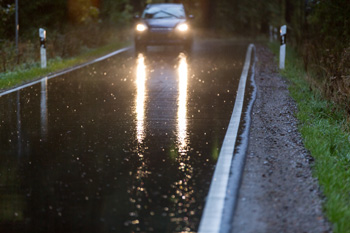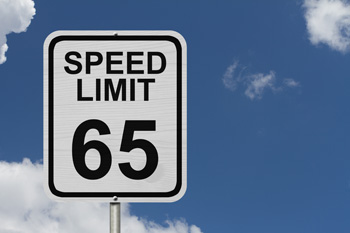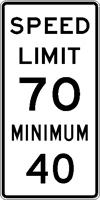Our DMV-approved online drivers education course is designed just for teens. Study at your own pace, pass the final test, and get your certificate.
Sign Up Now – Only $19.90 Learn More About Teen Drivers EdCalifornia has two types of speed laws:
Basic Speed Law
Under the Basic Speed Law, you are required to use common sense and drive at a safe speed based on your surrounding environment such as current weather conditions, the current traffic situation, current road conditions and other reasonable considerations, even though the speed limit sign has a different speed limit.

For example, if the weather condition is not good, and most vehicles at the freeways are slowing down and driving at 45 mph, even though the freeway's speed limit is 65 mph, you are required to drive 45 mph because that is the safe speed limit for the current condition.
Regardless of the posted speed limit, you will need to slow down and base your speed depending on the following factors:
Maximum Speed Law
Under the maximum speed law, it is illegal to drive over the speed limit that is posted on the streets or highways.
Look out for the posted speed limit signs and do not speed over the posted limit signs.

Remember, the higher your speed is, the longer it takes to stop your vehicle. And accidents that happen at a higher speed are much more fatal.
Point to Ponder - A collision at 60 mph has four times the force of a collision at 30 mph (and not twice as much).

Minimum Speed Law
There are also minimum speed limits that are in place to avoid accidents. While you should never speed, you should also not drive so slowly that you become a hazard for other drivers.
Driving in a way that blocks other drivers or interferes with them traveling at a normal speed is against the law.